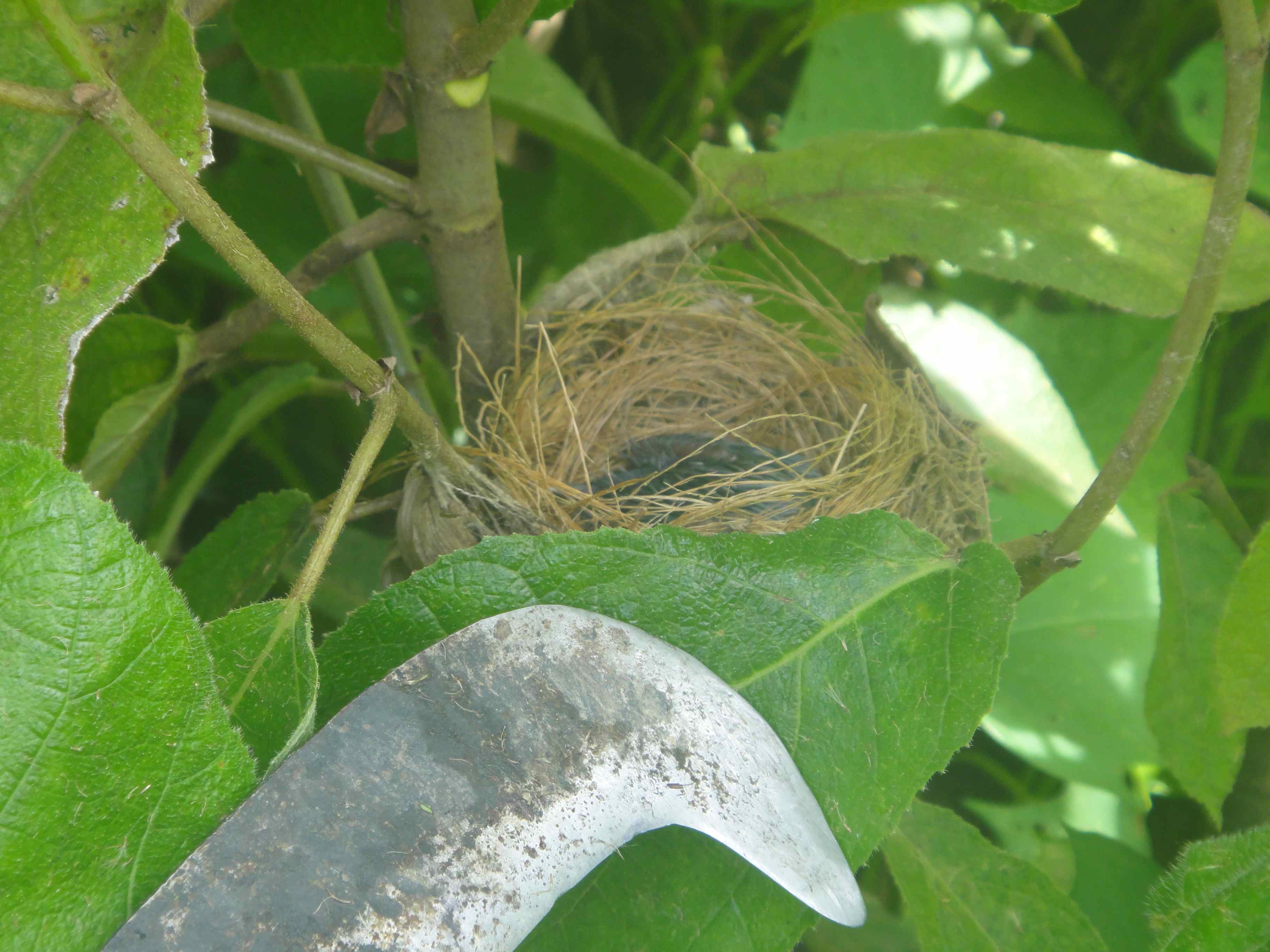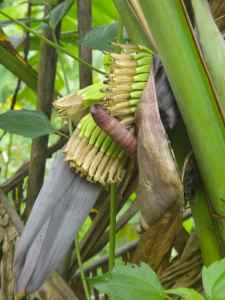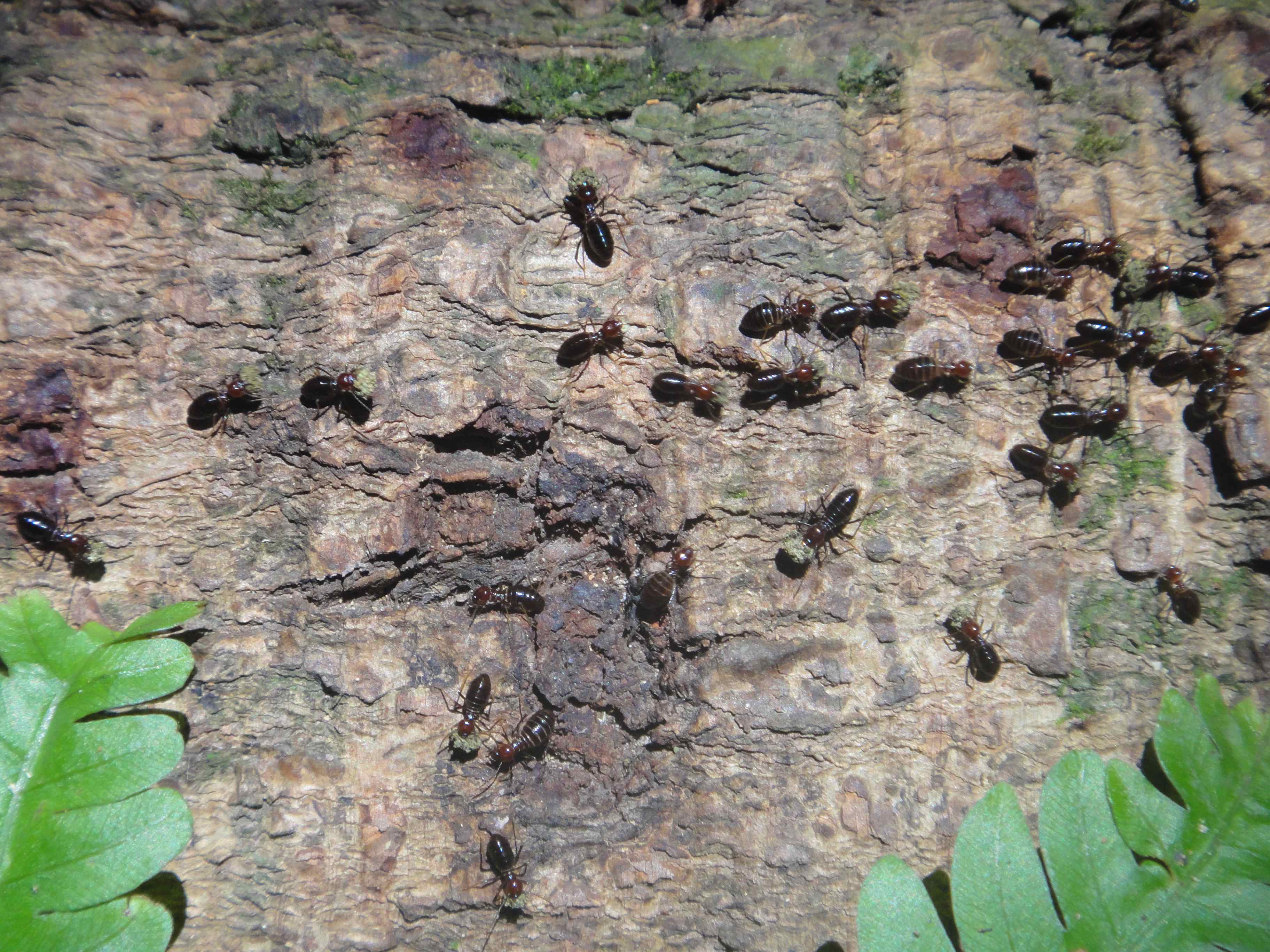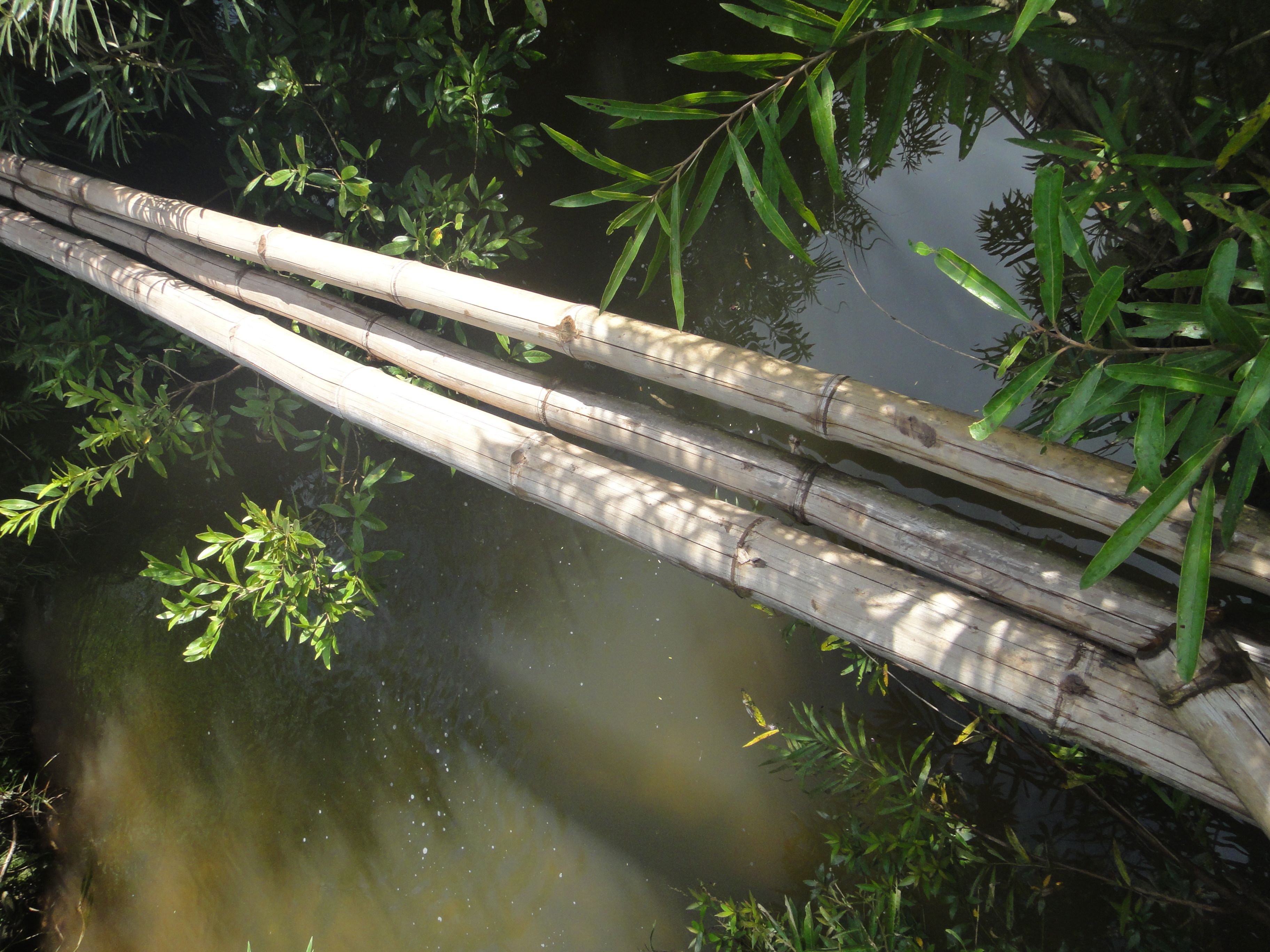Spirits of the Forest
And when your guides are animists, who whole-heartedly believe in the spirits of the forest, the experience is deeper. When hiking in Europe you might lay a stone upon a cairn, as a good luck sign and mark of your travels. In the Nam Ha protected region of northern Laos you lay an offering of leaves at a sacred place.
In this instance, a termite mound, home to the tiny creatures whose minuscule minings can crumble the tallest tree to soil. Dust to dust, ashes to ashes, leaves to soil.
As we laid our leaves, Sing and Zhang, our guides, half-chanted, half-sang a Hmong prayer to the spirit of the forest, requesting safe passage through his territory, wishing us luck on our journey, and praying for the continuance of the circle of life.
There’s a beauty in both life and death in an ecosystem this rich. Scarlet flowers with seeds just waiting to drop. Mushrooms in shades from indigo to gold sprouting from the death of older plants. Tiny baby birds, with a smattering of feathers, their grassy nest concealed behind green leaves.
Flower heads dying away as they disgorge their seeds.
And wild bananas just beginning to sprout their seedy fruits.
One of the many pleasures of travelling with the nine year old is the childlike wonder he takes in watching ants go about their business. The sort of leisurely watching that, as adults, working too fast and too hard, we almost actively unlearn.
There is nature, too, on the grander scale. The Buddha tree is a type of parasite, which grows up around the host, until it finally engulfs it completely, soaring skyward as if the host had never been.
We learnt a lot in our two days’ journey. Zhang and Sing taught sir traditional Hmong hunting calls. How to simulate the mating call of a muntjac roe deer using a leaf. The different female birdsongs which hunters use to attract the male. And, by far the most exciting part, how to use a traditional fishing harpoon…
Now, bamboo is one of nature’s wonder plants. It has a tensile strength equivalent to steel and can grow tens of feet in a month. Folk here eat it — and rattan shoots, too — make spoons, chopsticks, baskets and incense sticks with it, build bridges, houses, rooves…
But who knew that wild banana plants could regrow those huge leaves inside a week, and turn from seedling to tree in five months?
We ate lunch — packed in leaves — off banana leaf tables. Slept under a banana leaf shelter. And transformed shreds into drinking cups from a little stream.
There was an odd transformative moment on the journey, too. A big part of parenting is letting your children manage their own risk (within limits) and grow, hopefully, to be both bigger and a better person than you are.
Now. I knew Z was going to be fitter than me at some point. He’s male. I’m female.
He’s my son, for god’s sake! Just by being a ma I have one foot in the grave.
But I hadn’t expected that point to come so soon.
So we walked 50k over hilly terrain — with a couple of slippery ravines thrown in — over the last two days. When we reached the dazzling sheer granite waterfall which heralded our riverside camp for the night, I was tired. I could, to be honest, have slept.
The nine-year-old? He was straight in the water with the harpoon, looking for crabs.
Today? Well, we agreed to do very little (bar a trip to the museum round the corner and a bit of unschooling on botany). But I’m feeling the burn. He’s fine.
It’s an odd feeling. A combination of intense parental pride with an awareness of ageing and mortality, a shock that my little boy is growing up so fast…
It’s in the preposition, I guess. He’s growing up. I’m growing, well…, old.
I’m 36. In much of Laos I’d be a grandmother by now.
There is, also, nothing quite like vertigo to bring home one’s frailty. Five minutes into our journey, we came across a bamboo suspension bridge, unpleasantly high above a disconcertingly low river, its slats so dilapidated that for long stretches one has to balance on the cables.
I have, quite literally, had nightmares about this sort of thing. In particular, about Z falling through one (my vertigo is associative: like my father’s, it’s worse when my child is at height than when I am).
But I am really keen that he does not inherit my irrational neurosis.
Anywise. He went first. He crossed sensibly, slowly and safely, with neither fear nor assistance.
He crossed this bamboo pole bridge, too.
And the most terrifying bridge of the trek, suspended thirty-odd feet above the Nam Tha river with a handrail that disappeared midway. (When it comes to Lao bridges, the conventional maxim for vertigo sufferers — “whatever you do, don’t look down” — is a recipe for something rather worse than vertigo.)
My pathetic, terror-stricken inching was sufficiently obvious for Zhang, our local guide, to come and, quite literally, hold my hand for the last few steps.
I had asked sir to hold Sing’s hand.
Less, when looked at rationally, for his benefit, than for mine. The bridge looked terrifying. But to actually fall into the water (which was deep enough to be non-lethal) one would have had to trip and fall at a flawless right angle.
Neither Sing nor Z appeared to feel hand-holding was necessary. He made a steady, cautious, safe crossing, while I quivered like an oversized jelly on the other side.
But there was beauty everywhere. Young maize against a blue and cottonwool sky, outside the Lantaen village where a sudden rainstorm made chickens and piglets run squeaking for cover and little naked children race out to dance in the rain.
And a little darkness, too. Because when you live in the world of the forest, and the spirits, the spirits bring harm, as well as good. Almost every child we met in this poor, rural region wore the string bracelet the shamans put on children when they fall sick. Many more than one.
This is the gate which marked our transition from the forest to the Lantaen village, where folk live in bamboo houses, spin cotton and dye it indigo as they have done for centuries. The latticework web on the left, and the bamboo leg-iron on the right, are traps for hungry spirits, laid every year on January 1st.
Not the powerful spirit who controls the forest and your passage through it. But darker forces. The spirits of the unburied, unmourned dead. Who will, if you do not guard against them, emerge from their unquiet rest, pass into the village, and feed.
Thanks to Debbie Dubrow for hosting Photo Friday.
To do it yourself? Visit Into the Wild in the night market, Luang Namtha, Laos. For two days trekking and one night camped by the river, two amazing guides, one Lao meal, water and three Hmong meals, all to ourselves, we paid 1,000,000 kip ($120 US). You will need to carry sufficient water for the first day (two days if your kids won’t drink river water boiled with wild cardamom roots). Wear serious shoes, bring a well-fitted snorkel mask if littlies want to spearfish by night, sandals for river crossings, a raincoat in the rainy season, insect repellent, sun-cream and plenty of high-energy snacks.













I love these macro photos – the closeup details are really beautiful. So often, I’m looking at the big picture when I photograph and forget about the little details.
Beth, thank you…. I’m loving closeups at the moment, Possibly too much of the big, bad and beautiful for comfort. Also, when you walk with children, you do slow right, right down… Theodora
Mummy,
Your experiences are incredible. As I plan my own solo trip (I’m a 63-yr-old guy) to Laos, I think you’ve inspired me! Thx much
You will fall in love with the place. Guaranteed. Allow yourself plenty of time, though. It takes aeons to get around, even though the distances look tiny on a map.